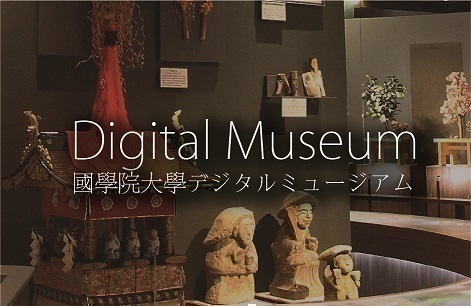- トップ
- Encyclopedia of Shinto
- Jingiryō
Encyclopedia of Shinto
| Main Menu: | |
| Links: |
詳細表示 (Complete Article)
| カテゴリー1: | 3. Institutions and Administrative Practices |
|---|---|
| カテゴリー2: | Ancient |
| Title | Jingiryō |
| Text | The Laws on Deities of the Taihō and Yōrō codes. No copy of the Taihō Code of 702 has survived, but in the reconstructed Yōrō Code (promulgated in 757), the twenty-article Jingiryō comprises Chapter Six.. Jingiryō established the basis of official ritual laws for the ritsuryō state. They were based on Tang (Chinese) ritual laws, but were significantly altered to incorporate religious traditions on the archipelago. Articles One through Nine of Jingiryō list the official annual rites by month and name, and also establish the basic outlines of each. These ceremonies were to be performed according to the regulations laid down in compilations of specific procedures (shiki). Specifically, the following rituals took place: in the second month, the Ki'nensai (Prayers for the Year Ceremony); in the third month, Chinkasai (Pacifying the Flowers Ceremony); in the fourth month, Kanmisosai (Deity Raiment Ceremony), Ōimisai (a ceremony for Hirose Shrine), Saigusasai (a ceremony for Ōmiwa Shrine), and Fūjinsai (Wind Deity Ceremony); in the sixth month, Tsukinamisai (a semi-annual rite for various deities also performed in the twelfth month), Chinkasai (Pacification of Fire Ceremony), Michiaesai (Ceremony of the Four Corners of the Capital); in the seventh month, Ōimisaiand Fūjinsai; in the ninth month, Kanmisosai, Kannamesai (Ceremony for the Divine Tasting of the Fruits); in the eleventh month, on the first day of the rabbit, Ainamesai (Sharing of the Fruits Ceremony), on a day of the tiger, chinkonsai (Ceremony for the Pacification of the August Spirits), and on the last day of the rabbit, Daijōsai (Great Tasting of the Fruits Ceremony); and in the twelfth month, Tsukinamisai, Chinkasai, and the Michiaesai. "Day of the rabbit," "day of the tiger," and so forth indicate the days of the month according to the traditional calendrical system, which uses the twelve Chinese zodiac animals. Articles Ten through Fourteen outline the protocols for the sokui girei (Enthronement Ceremony), the associated periods of abstinence (kessai) and taboos for those periods. For example, in regards to the Enthronement Ceremony, Article Ten instructs those involved to worship the deities of heaven and earth (tenjin chigi), to observe one month of partial abstinence (sansai), and three days of total abstinence (chisai). It also requires that special offerings (ōmitegura, see heihaku) be prepared within the three months prior to the ceremony. According to Article Thirteen, on the day of the ceremony, the Nakatomi clan must recite the Lauds to the Heavenly Deity (Amatsukami no yogoto) while the Inbe clan must present the sacred mirror and sword. Article Twelve divides annual rites into three categories — major, mid-rank, and minor — according to the required lengths of their abstinence periods. Articles Fifteen through Seventeen establish provisions for administering and conducting rites. Article Fifteen prescribes the procedure of conducting a ritual. According to this regulation, the Jingikan (Department of Divinities) is responsible for giving the Dajōkan (the Council of State) advance notice of an approaching rite so that the Dajōkan can mandate observance of a period of partial abstinence by all court offices in the early morning hours of that day. Article Sixteen stipulates that the directors of the relevant offices must personally see to it that provisions for a ceremony — offerings (heihaku), food, drinks and fruits — are prepared in accordance with the rules. Article Seventeen discusses the procedure for appointing an envoy to take offerings to a shrine on occasions other than regularly scheduled festivals. Articles Eighteen and Nineteen set the outlines of the performance of the Great Purification Rite (Ōharae). According to Article Eighteen, on the last days of the sixth and the twelfth months, the Nakatomi must present offerings of miharainonusa, while recorders from Yamato and Kawachi Provinces (fuhitobe) need to make an offering of swords and recite the incantation for the cleansing of pollution (haraekotoba). Afterwards, men and women from all of the court offices are to gather at the purification site by the Suzaku Gate where the Nakatomi recite purifying words (haraekotoba, see Nakatomi no harae) and the Urabe perform the purifying ritual (harae). Article Nineteen lists items to be collected from each district, household, and provincial governor (kokuzō, see kuni no miyatsuko), and offered for the performance of the ōharae in the provinces. Each district needs to provide one sword, one deerskin, one hoe, and other miscellaneous items; each residential unit must donate one jō of hemp; and each provincial governor is responsible for furnishing one horse. Finally, Article Twenty discusses some issues concerning taxation. It stipulates how taxes are to be used and discusses how a provincial governor should supervise the process. Taxes mentioned here include so (land tribute), yō (labor tribute), chō (tribute in kind), and shinzei (grains for emergency storehouses) collected from the kanbe (cultivators and other workers who served a shrine). A requisite source for study of Jingiryō is the Ryo no shūge, a mid-ninth century compendium of commentaries on the Yōrō Code, including those on Jingiryō provisions. See also Ritsuryō Jingikan — Takashio Hiroshi |




